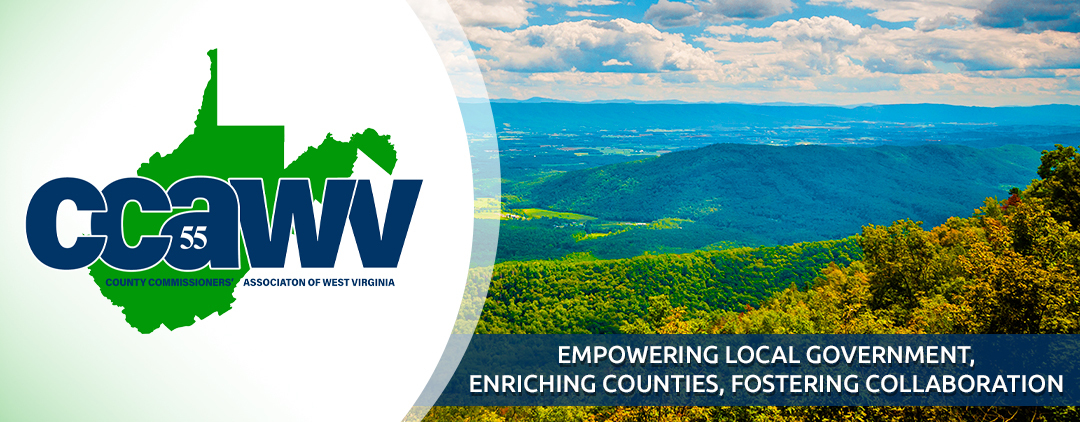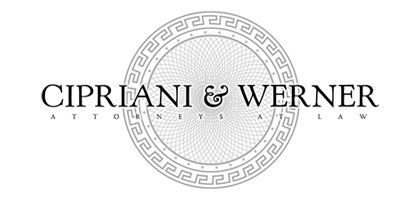Welcome to Hancock County, West Virginia!
The Hancock County Commission would like to take this opportunity to welcome you to our county's economic development home page. Our page was designed by West Virginia University's Institute for Public Affairs with the cooperation of the County Commissioners' Association of West Virginia.
We hope that you find our page a useful resource. Business entrepreneurs will be especially interested in visiting our link to our county's available industrial sites and to basic economic data about our county. If you have not visited our county in person, please feel free to take a look at our county picture tour page. Also, everyone is welcome to learn about our county's past by visiting our early history page and to learn about our schools by visiting our link to the county's schools. The West Virginia links page offers numerous other sites of potential interest to anyone interested in conducting business in or moving to West Virginia. Finally, if you have any further questions, check out our county phone book and give us a call.
Whether you are a business entrepreneur looking for a potential site for your business, or someone who is looking for a nice place to live, we hope that you enjoy your visit to our economic development home page. As you can see, we are very proud of our county. It is a great place to call home.
Hancock County Officials' Telephone Numbers (area code 304):
Administrative Assistant (Finance) 564-3311 ext. 232
Administrative Assistant (Operation) 564-3311 ext. 240
Assessor 564-3311 ext. 256
Circuit Clerk 564-3311 ext. 258
Commission 564-3311 ext. 240
County Clerk 564-3311 ext. 266
Prosecuting Attorney 564-3934
Sheriff 564-3311 ext. 230
Hancock County Economic Profile:
United States Bureau of the Census
- Browse the 2000 Census Data for Information on Hancock County Using the Searchable Tables: Basic Demographic Characteristics
- US Census General Profile for Hancock County: General Profile for 2000
- US Census County Business Patterns for Hancock County: Economic Profile for 2000
WVU Economic Data for Hancock County
- West Virginia Business & Economic Information System
Mapping and Cartography
- Tiger Map of Hancock County
- Interactive GIS Mapping from the West Virginia Division of Environmental Protection
Hancock County History
The northernmost county in West Virginia, Hancock County, was created by an act of the General Assembly on January 15, 1848 from parts of Brooke County. It is the smallest county in the state (88.55 square miles) and was named in honor of John Hancock (1737-1793). He was born on January 12, 1737 in Quincy, Massachusetts, was a leader in the American Revolution, served as President of the Provincial Congress of Massachusetts from 1774 to 1775, President of the Continental Congress from 1775 to 1777, Governor of Massachusetts from 1780 to 1785 and 1787 to 1793, and the first signer of the Declaration of Independence. He died on October 8, 1793.
First Settlers
The first native settlers along the Ohio River in the area of present-day Hancock County were the Mound Builders, also known as the Adena people. Remnants of the Mound Builder's civilization have been found throughout the Ohio River Valley, with a high concentration of artifacts located at Moundsville, West Virginia, just south of the county (in Marshall County). The Grave Creek Indian Mound, located in the center of Moundsville, is one of West Virginia's most famous historic landmarks. More than 2,000 years old, it stands 69 feet high and 295 feet in diameter.
According to missionary reports, several thousand Hurons occupied present-day West Virginia during the late 1500s and early 1600s. They were driven out of the state during the 1600s by members of the powerful Iroquois Confederacy (consisting of the Mohawk, Onondaga, Cayuga, Oneida and Seneca tribes, and joined later by the Tuscaroras tribe). The Iroquois Confederacy was headquartered in New York and was not interested in occupying present-day West Virginia. Instead, they used it as a hunting ground during the spring and summer months.
During the early 1700s, the Mingo made their home in both the Tygart Valley and along the Ohio River near present-day Hancock County. The Mingo were not actually an Indian tribe, but a multi-cultural group of Indians that established several communities within present-day West Virginia. They lacked a central government and, like all other Indians within the region at that time, were subject to the control of the Iroquois Confederacy headquartered in New York (comprised of the Seneca, Cayuga, Onondaga, Oneida, Mohawk, and Tuscarora tribes). The Mingo originally lived closer to the Atlantic Coast, but European settlement pushed them into western Virginia and eastern Ohio.
Just prior to the outbreak of the French and Indian War (1755-1763), George Washington, then a British officer, reported seeing Mingo campfires near Follansbee, just south of present-day Hancock County (in Brooke County). During the war, the Mingo, Shawnee, and Delaware Indians allied themselves with the French and inflicted casualties on the English. Unfortunately for the Mingo, the French lost the war and ceded the all of its North American possessions to the English. The Mingo then retreated to their homes along the banks of the Ohio River. During the American Revolution (1776-1783), the Mingo allied themselves with the British. In 1777, a party of 350 Wyandots, Shawnees, and Mingos, armed by the British, attacked Fort Henry, near present-day Wheeling. Nearly half of the Americans manning the fort were killed in the three-day assault. The Indians then left the Fort celebrating their victory. For the remainder of the war, smaller raiding parties of Mingo and other Indian tribes terrorized settlers throughout the Northern Panhandle region. As a result, European settlement in the region came to a virtual standstill until the war's conclusion. Following the war, the Mingo, once again allied with the losing side, returned to their homes along the banks of the Ohio River. However, as the number of settlers in the region began to grow, and with their numbers depleted by the war, the Mingo decided to move further inland.
The most famous Mingo in West Virginia history was known to the European settlers as Logan. His real name was Talgayeeta. His father was a member of the Cayuga tribe and originally lived in central Pennsylvania. His father had taken the name Logan after a Pennsylvania official named John Logan. In 1763, Logan moved west to the Ohio River where he established a small settlement consisting primarily of members of his extended family. Logan and the other members of his settlement were considered friendly and cooperative by most settlers in the region, until his settlement was attacked by English settlers on April 30, 1774. The attack occurred on the West Virginia side of the river, in present-day Hancock County. Ten members of Logan's settlement, including two women, were killed and scalped by the settlers. Among the victims were members of Logan's immediate family, including his wife and all but one of his children. Several versions of the massacre circulated on the frontier. Lord Dunmore blamed a settler named Daniel Greathouse while Logan blamed Michael Cresap, a Maryland soldier and land speculator who was building cabins along the Ohio River as a means of securing land. Although the evidence suggests that Cresap was in the vicinity at the time of the massacre, many historians believe that he was not involved in the murders. In any case, following the massacre, Logan allied himself with the British and went on the warpath, leading four deadly raids on the Virginia and Pennsylvania frontiers and instigating what would later be called Lord Dunmore's War of 1774.
Logan gained national fame for his eloquent speech that was delivered during the peace negotiations following the Indians' defeat at the Battle of Point Pleasant in 1774. Logan was not at the decisive Battle of Point Pleasant, but returned to the main Indian camp during the peace negotiations. His famous speech was not delivered in council, but was given to Colonel John Gibson who wrote it down and delivered it on Logan's behalf during the negotiations. The speech was later published in many newspapers across the nation:
I appeal to any white man to say if he ever entered Logan's cabin hungry and I gave him not meat; if ever he came cold and naked and I gave him not clothing. During the course of the long and bloody war Logan remained idle in his cabin, an advocate for peace. Such was my love for the whites that my countrymen pointed as they passed and said, "Logan is the friend of white men." I had even thought to have lived with you but for the injuries of one man. Colonel Cresap, the last spring, in cold blood and unprovoked, murdered all the relations of Logan, not even sparing my women and children. There runs not a drop of my blood in the veins of any human creature. This called on me for revenge. I have sought it. I have killed many. I have fully glutted my vengeance. For my county I rejoice at the beams of peace. But do not harbor a thought that mine is the joy of fear. Logan never felt fear. He will not turn his heel to save his life. Who is there to mourn for Logan? Not one.
After Lord Dunmore's War concluded, Logan moved from place to place and, in 1789, joined an Indian raiding party that attacked settlements in southwestern Virginia. He was later killed by one of his own relatives in 1780, near present-day Detroit. He said before his death that he had two souls, one good and the other bad, as he put it "...when the good soul had the ascendant, he [referring to himself] was kind and humane, and when the bad soul ruled, he was perfectly savage, and delighted in nothing but blood and carnage."
European Pioneers and Settlers
Robert Cavelier de La Salle was probably the first European to set foot in present-day Hancock County. He sailed down the Ohio River in 1669. In 1749, Louis Bienville de Celeron sailed down the Ohio River and may have set foot on present-day Hancock County. He claimed all of the lands drained by the Ohio River for King Louis XV of France. He met several English fur traders on his journey and ordered them off of French soil and wrote strong letters of reprimand to the colonial governors protesting the English's presence on French land.
In 1770, Daniel Greathouse built a small fort near Newell in Hancock County. The fort, which promised protection to those who lived near it, attracted several other families to the area. The following year, Harmon Greathouse settled on a creek near present-day Weirton which still bears his name, Harmon's Creek.
In 1776, John Holliday built his cabin on a "cove"on Harmon's Creek. Following the Revolutionary War, several families settled in the Hancock County area, particularly soldiers who were granted land in exchange for their service in the Continental Army. Colonel Richard Brown and his family, for example, settled on a tract of 1,000 acres in Holliday's Cove. The town of Holliday's Cove was officially founded in 1793.
Important Events During the 1800s
During the War of 1812, Weirton mills were the main source of cannonballs used at the Battle of Lake Erie. The cannonballs were smelted from iron at the Peter Tarr furnace.
Hancock County was created in 1848 after an attempt to move Brooke's county seat from Wellsburg (as it is then spelled) to the more centrally-located Holliday's Cove failed. The new county line was drawn through the middle of Holliday's Cove.
Most of the residents of Hancock County supported the Union during the Civil War. When the question of succession was put before the people of Virginia in June 1861, only 23 people from Hancock County voted to secede.
Important Events During the 1900s
Weirton's founding in 1909 began with Ernest T. Weir and James R. Phillips' purchase of Clarksburg's Phillips Sheet and Tin Plate Company in 1905. They searched for a place to relocate the business that had both more available space and was readily accessible to transportation routes to the eastern steel markets. They chose the site of present-day Weirton because it had easy access to the Ohio River and a railroad ran through the area, connecting it to Pittsburgh.
In 1909, they acquired 106 acres or apple orchards just north of Holliday's Cove from Cyrus Ferguson. They later purchased a total of 1,200 acres in the area. When they constructed their first mill, there were only twenty-five houses constructed on the nearby hillsides. In less than six years, Weir was operating fifty hot mills in three locations; and was the second largest tin plate producer in the world. The mills attracted both immigrants from abroad and workers from throughout the state. A bottom town called Weirton emerged around the mills and soon grew into the largest unincorporated town in Hancock County. In 1918, the Phillips Sheet and Tin Company changed its name to the Weirton Steel Company.
By the 1940s, present-day Weirton was comprised of five separate communities - Holliday's Cove, Weircrest, Weirton Heights, Marland Heights, and downtown Weirton. In 1940, 6,137 people lived in Holliday's Cove, 2,476 lived in Weirton Heights and 9,138 lived in other areas collectively called Weirton. The total of 15,275 was reputedly the largest unincorporated place in the state.
On July 1, 1947, the five communities were merged into the newly incorporated and chartered city of Weirton. Thomas E. Millsop, chairman and chief executive officer of the National Steel Corporation's Steel Division, was elected mayor, serving from 1947 to 1955.
The steel industry continued to attract immigrants from southern and eastern Europe to Hancock County, diversifying and expanding its population. By the end of the century, the domestic steel industry faced increased competition from abroad and the economic and population growth experienced by Hancock County in early decades slowed.
Another company of note in the county is the Homer Laughlin China Plant located Newell. It is the largest pottery in the world. Originally founded in East Liverpool, Ohio during the 1870s, it expanded to Newell in 1906. By 1929, the company closed all of its other plants. Today, Homer Laughlin is best known for its collectible lines of colored dinnerware, including Fiesta, Coronet, Harlequin, and Riviera.
County Seat
The act creating the county left the location of the county seat to the electorate, which selected New Cumberland over New Manchester by a narrow margin of thirteen votes. The county court had been meeting in New Manchester and the judges initially refused to move the court to New Cumberland. A second election was held in 1850, with New Cumberland winning once again, this time by forty-six votes. The county court was then moved to New Cumberland, but a third election in 1852 resulted in New Manchester receiving one more vote than New Cumberland. The county seat then returned to New Manchester until later returning to New Cumberland.
New Cumberland was originally called Brick Bend because of the many brickyards and pottery works that were located there. The city was begun in 1784 and named Cuppytown for its founder, John Cuppy. In 1839, John Cuppy formally laid out the town into forty-two lots and called it Vernon, but later changed the name to New Cumberland in deference to the wishes of the first purchasers of the lots. The town was incorporated by the West Virginia state legislature in 1872.
In 1794, Peter Tarr built an iron processing furnace on King's Creek, near New Cumberland. The "Old Tarr Furnace" was the first of its kind west of the Allegheny Mountains and has the distinction of having been the place where the cannonballs that Commodore Perry fired from the guns of his ships in the Battle of Lake Erie in 1813 were made.
References
Boyd, Peter. 1927. History of Northern West Virginia Panhandle embracing Ohio, Marshall, Brooke, and Hancock Counties. Indianapolis: Historical
Publishing Company.
Cobb, William H., Andrew Price and Hu Maxwell. 1921. History of the Mingo Indians. Cumberland, Md., Printed by F.B. Jenvy.
Fundis, Loi Alete. 2000. "A Short History of the Weirton Area." Available on-line at:
http://129.71.121.130/htdocs/hancock/weir/maryhweir/reference/usgovt/WeirHist.html
Welch, Jack. 1963. History of Hancock County. Wheeling: The Wheeling News Printing and Litho. Company.
Authors
Dr. Robert Jay Dilger, Director, Institute for Public Affairs and Professor of Political Science, West Virginia University.
Steve Kovalan, undergraduate history and political science major, West Virginia University.
Janaury 26, 2002.



















